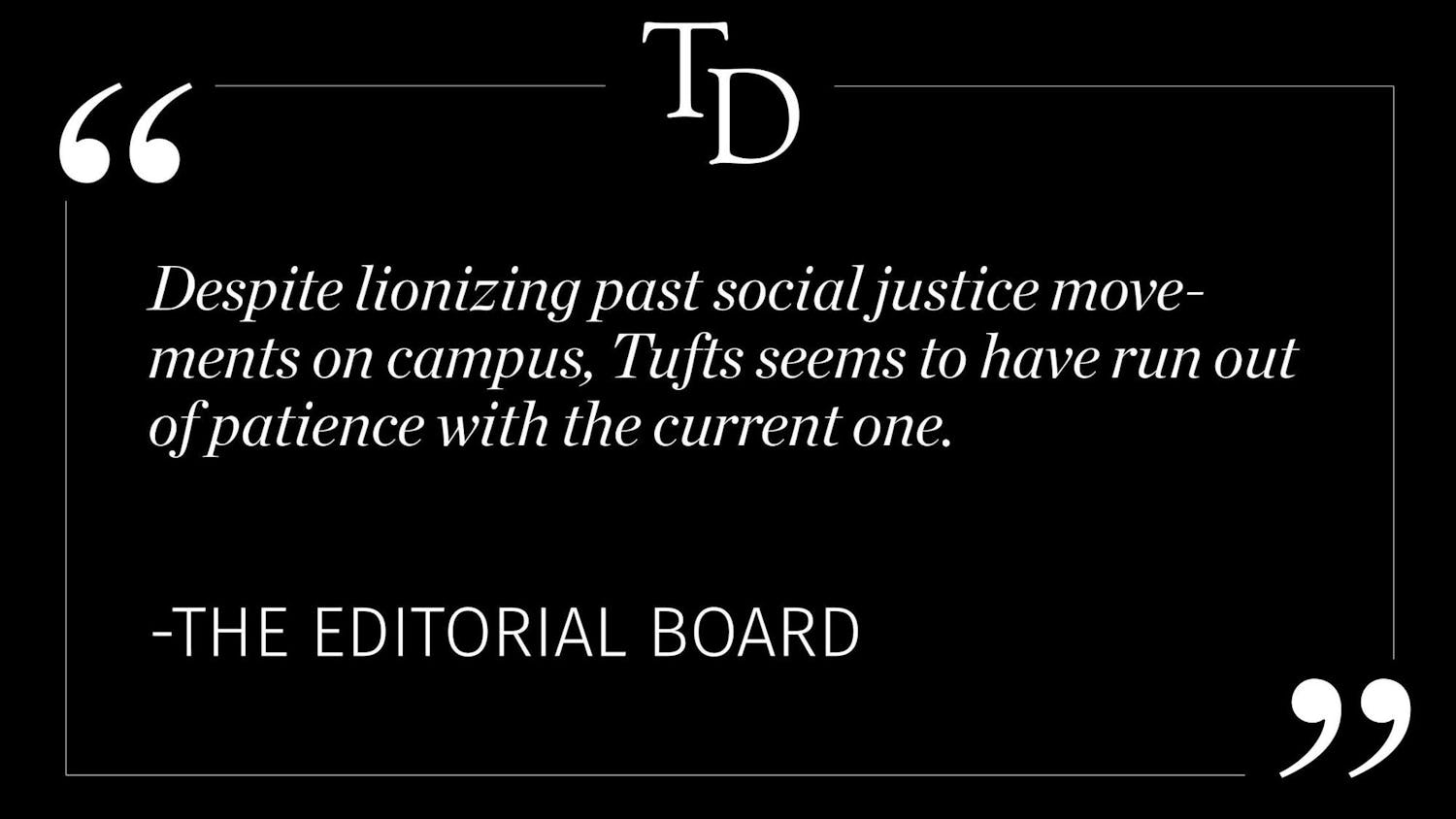Another semester, another controversy relating to something published in The Primary Source. This time, the editors of the publication billing itself as Tufts' Journal of Conservative Thought published a cover of Barack Obama photoshopped to resemble Jesus Christ in order to satirize the messianic quality our new president seems to take on in the eyes of some of his more ardent admirers.
Junior Benjamin Silver responded on Feb. 5 with an op-ed in the Daily denouncing the Source's cover. When I spoke to him, he told me that at the heart of his argument lay the belief that the Source is intentionally printing inflammatory material that students could find objectionable. The title of his article, "We had a deal," suggests an implicit agreement between the Source and the student body that potentially offensive material be obscured from view within the magazine's pages. By displaying the Obama parody on the cover where it is impossible to ignore, Silver said the Source crossed a line.
"It's not just that I disagree with their opinions," Silver told me. "It's that when they print things that are offensive," he questions the fact that the Source continues to receive funding from the Tufts Community Union Senate.
The Source's editor-in-chief, Joel VanDixhorn, responded to Silver's piece on Feb. 9 with an op-ed he co-authored with assistant editor Jonathan Danzig. The piece pointed to the fact that publications spanning the ideological spectrum have poked fun at the Obama-idolization, so that the Source was hardly offering unprecedented partisan vitriol. VanDixhorn and Danzig also criticized the hypocrisy underlying Silver's accusations, labeling as "sanctimonious" a repudiation of Obama-mocking after Republicans just endured years of Bush-bashing from the other side of the aisle.
And so it goes: The Source publishes something, followed by the typical wave of recriminations in which people accuse the Source of insensitivity, and the Source, in turn, questions these detractors' commitment to protecting First Amendment rights and variance of opinion on campus. Although I think the Op-Ed page exchange in the Daily last week testifies to a healthy campus press, it feels like we've been here before.
The fact of the matter is, the Source has done absolutely nothing wrong. As VanDixhorn pointed out, satire — the ability to expose some of the absurdities and contradictions of our society through humor — is perfectly legitimate. The facetious newscasts of Jon Stewart and Stephen Colbert have become cultural mainstays and offer a plethora of tongue-in-cheek efforts to bring self-aggrandizing public officials down a notch.
Moreover, Silver's appeal to religious sensibilities, as when he upbraids the Source for its choice to print content that is "highly offensive and blasphemous to Christians, Muslims and Jews," comes off sounding a little fanatical. The unfettered right to produce such impious material is a hallmark of religious freedom. The opposite pole leads us into dangerous waters, as evidenced by the violent response to a Danish newspaper's publication of a series of cartoons depicting the prophet Muhammad a few years ago.
This specific case offers an opportunity to examine the sometimes strained relationship between The Primary Source and the student body. It goes without saying that Tufts is, on average, further left, relative to the rest of the country, and I think it's healthy to give voice to the contingent of conservative or libertarian students on campus. The problem seems to be that the desire to amplify this voice in opposition to the prevalent liberal viewpoint leads the Source to take risks with its content, often opting for seemingly sensational or divisive pieces.
In 2006, the Source was lambasted after printing a series of allegedly racist Christmas carols, including a cover of "O Come All Ye Faithful" named "O Come All Ye Black Folk." The fallout led to loud calls to punish the Source in some way and there was even talk of curtailing their funding — something the Senate and the administration decided would be an indefensible impingement on free speech. This was the right decision, but in some people's eyes, the Source was irrevocably tainted as illegitimate and petty. The they're-just-trying-to-stir-things-up observation was ubiquitous on campus.
"We don't have to try to create controversy," VanDixhorn told me. "That's not our goal. Our goal is to send a message."
The Source does not purport to be an objective purveyor of information, as the Daily and the Observer do. It has an explicitly delineated lean, attracts writers with certain values and targets a specific readership. The administration's 2006 decision to sustain the funding upon which the Source relies to keep printing new copies, despite the ambient student uproar, testifies to this fact: You don't have to like it, or agree with it or read it. But it's not going away, so you'd better get used to it.
--
Jeremy White is a senior majoring in English. He is the university's public editor. His columns are available online at http://ase.tufts.edu/publiceditor and he can be reached at jeremybw1@gmail.com.





